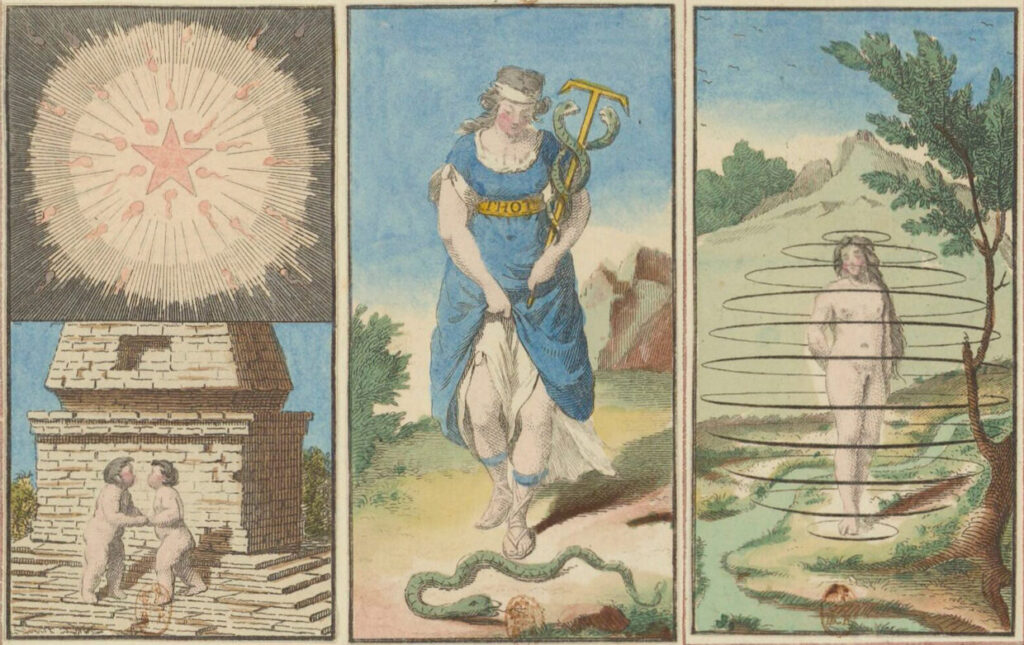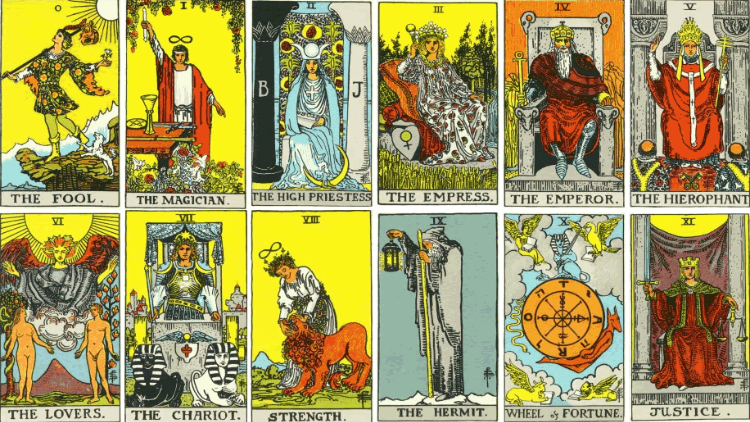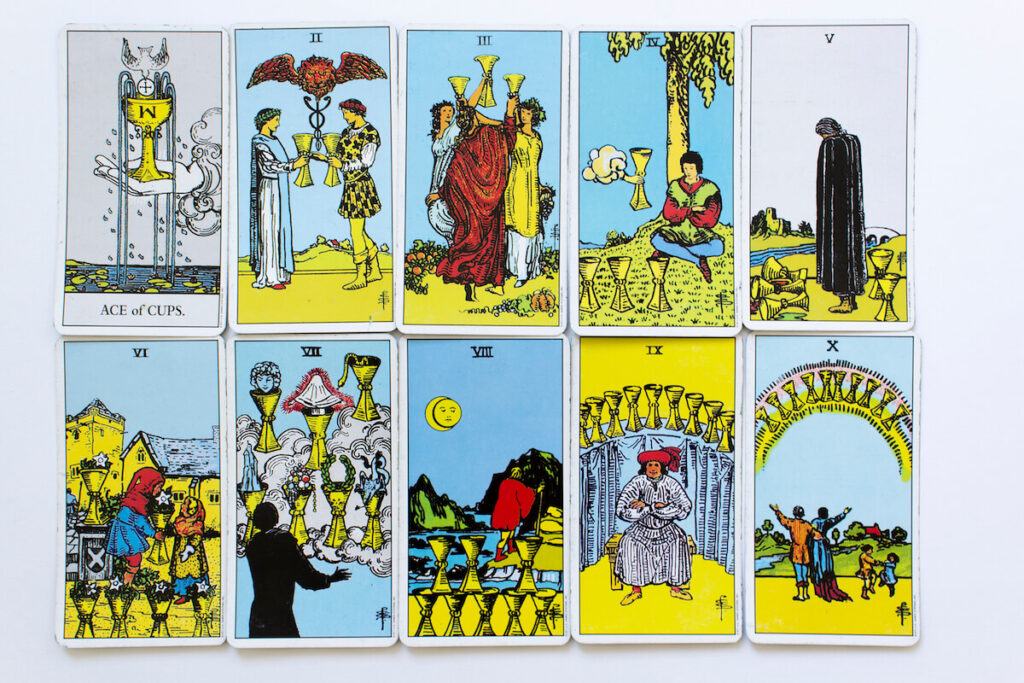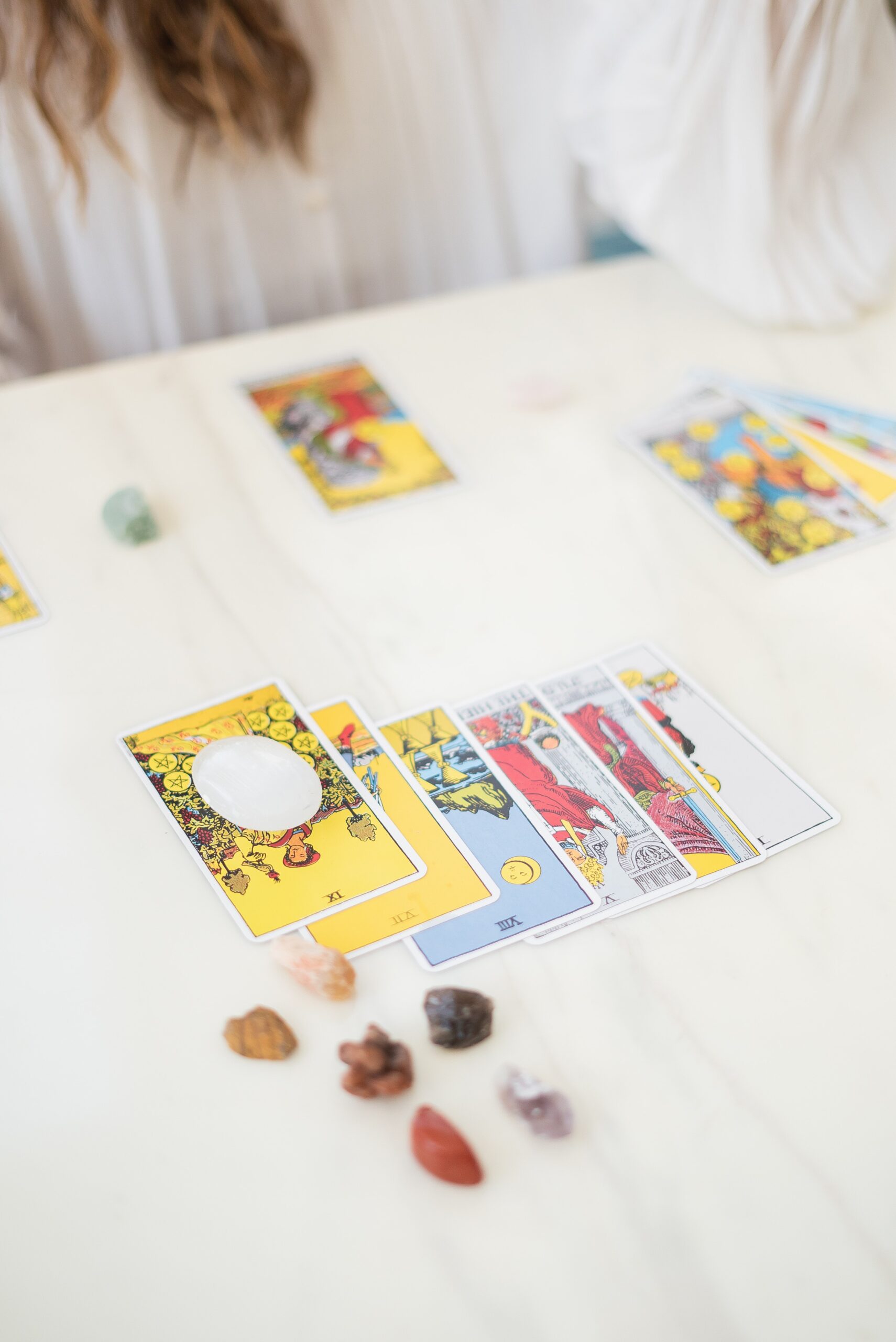The history of tarot cards is a topic of debate among scholars and historians, but it is generally believed that the first tarot cards were created in northern Italy in the early 15th century.
Initially, tarot cards were used as a game, similar to modern-day playing cards. However, over time, they became associated with divination and fortune-telling. The earliest known tarot deck is the Visconti-Sforza deck, which dates back to the mid-15th century and was commissioned by the Duke of Milan.

In the late 18th century, a Frenchman named Antoine Court de Gébelin wrote a treatise on the tarot, in which he argued that the cards contained hidden esoteric meanings and were based on ancient Egyptian knowledge. This idea was further developed by occultists like Eliphas Levi and Aleister Crowley, who used the tarot as a tool for spiritual development and magical practice.
In the 20th century, the tarot experienced a resurgence in popularity, thanks in part to the work of writers like Arthur Edward Waite and his collaborator, the artist Pamela Colman Smith, who created the Rider-Waite-Smith deck, which is still one of the most widely used and recognizable tarot decks today.
Today, the history of tarot has shown to us that tarot is used by people from all walks of life for a variety of purposes, including divination, self-exploration, and spiritual growth. The history of tarot cards is rich and complex, and it continues to evolve and adapt to changing cultural and social contexts.
The Rider-Waite Tarot Deck
The Rider-Waite Tarot deck is one of the most popular and widely-used tarot decks in the world. It was first published in 1909 by the publisher Rider and Company, with illustrations by artist Pamela Colman Smith and guidance from tarot expert Arthur Edward Waite.

The deck consists of 78 cards, divided into two main categories: the Major Arcana, which consists of 22 cards that depict archetypal images and themes, and the Minor Arcana, which consists of 56 cards that are divided into four suits (Wands, Cups, Swords, and Pentacles).
The Major Arcana consists of 22 cards, which are often referred to as the “trump cards” or “major trumps.” Each card in the Major Arcana represents a major theme or archetypal image, such as The Fool, The Magician, The High Priestess, The Emperor, The Empress, The Hierophant, The Lovers, The Chariot, Strength, The Hermit, The Wheel of Fortune, Justice, The Hanged Man, Death, Temperance, The Devil, The Tower, The Star, The Moon, The Sun, Judgment, and The World.
The Minor Arcana consists of 56 cards, which are divided into four suits: Wands (also called Staves or Rods), Cups, Swords, and Pentacles (also called Coins or Discs). Each suit contains 14 cards, including an Ace, numbered cards from 2 to 10, and four court cards: Page, Knight, Queen, and King.
The cards in the Minor Arcana represent everyday situations and experiences, and can provide more detailed information and insights than the Major Arcana. They can also be used to explore specific areas of life, such as career, relationships, finances, and personal growth.
In addition to the 78 cards, some tarot decks may include additional cards, such as alternate versions of the Major Arcana, blank cards for personalization, or instructional cards.There are a lot of other tarot decks to choose from if Rider-Waite is not your type.

Significance of Tarot Cards
Tarot readings are typically conducted by a reader who shuffles the cards, lays them out in a particular pattern (called a spread), and interprets the meaning of the cards based on their position in the spread and the overall context of the reading. Tarot readings can provide insight and guidance on a variety of topics, including relationships, career, health, and personal growth.
Tarot cards are rich in symbolism and can provide insights into past, present, and future events and circumstances. They can also reveal hidden influences, patterns, and themes that may be affecting the situation or person being read for. Tarot readings can provide guidance and clarity, but they are not a substitute for professional advice or medical or legal advice.
It is important to note that tarot readings are not deterministic and the cards do not predict the future with 100% accuracy. The outcome of a tarot reading is influenced by many factors, including the actions and decisions of the person being read for. Ultimately, the tarot provides insight and guidance, but it is up to the individual to use that information to make informed decisions and take action.

Reading Tarot for yourself
Reading tarot for yourself can be a useful tool for gaining insight and clarity about different aspects of your life. However, it can also be challenging because it can be difficult to remain objective and avoid projecting your biases and desires onto the cards.
Remember that tarot is a tool for self-reflection and personal growth, and the insights you gain from the cards are ultimately up to you to interpret and apply to your life.
Understanding tarot is difficult in the start because it highly depends on your intuition and the mere meanings of the cards. As a beginner, you don’t need to memorize card meanings. You should be able to just give a gist of the cards that are spread out in front of you. Building a story out of the tarot cards is the main essence of a reading.
Overall, the history of tarot cards has proven that tarot cards have been used for guidance and future predictions. If you have the slightest interest in learning tarot, start with an intention of reading for guidance, rather than future predictions. Once you master guidance readings, the future will flow automatically.
As our understanding of psychology, spirituality, and consciousness evolves, so too may our understanding of the symbolism and meaning of the tarot.
It is likely that tarot reading will continue to be a valuable tool for personal growth, insight, and spiritual exploration for many people.